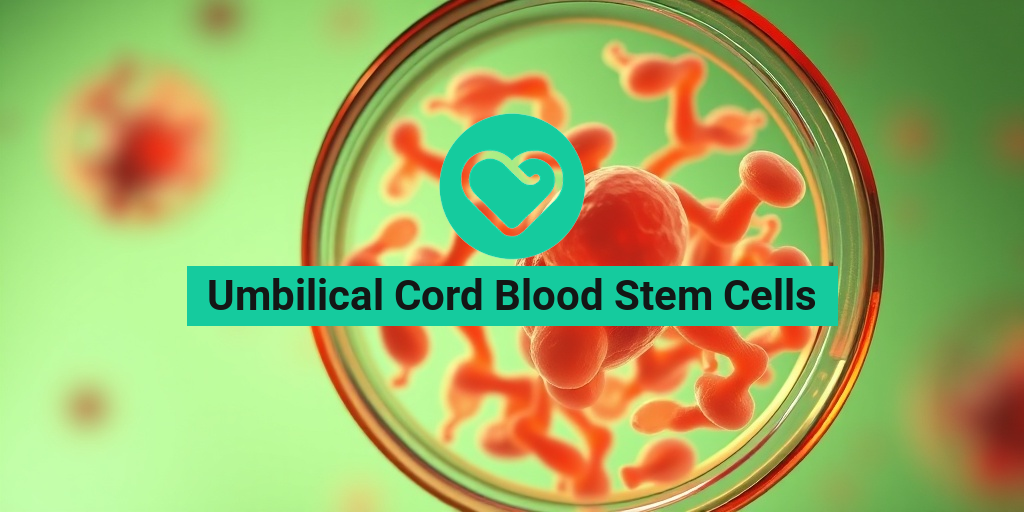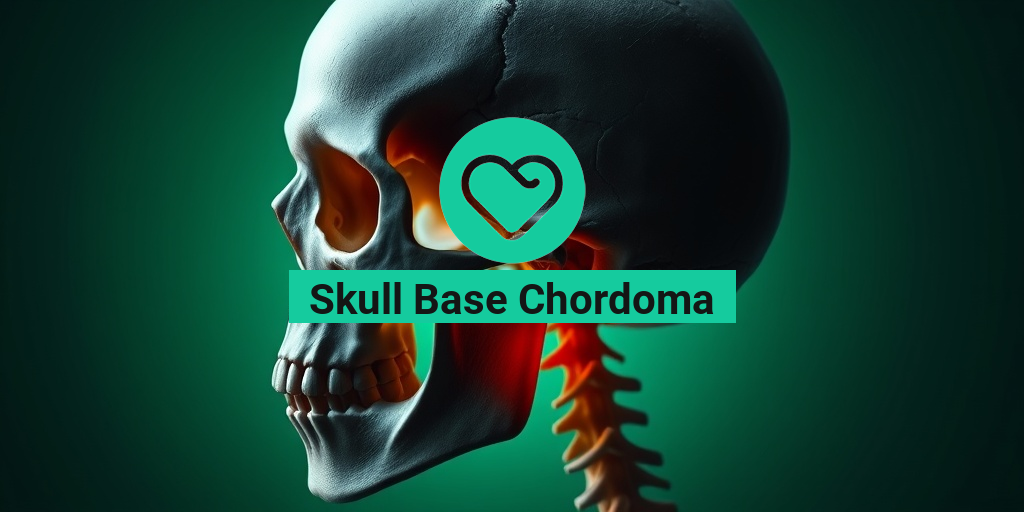What Are Umbilical Cord Blood Stem Cells?
Umbilical cord blood stem cells are a type of stem cell that can be found in the blood of a newborn’s umbilical cord and placenta. These remarkable cells have the unique ability to develop into various types of blood cells, making them a vital resource in medical treatments. When a baby is born, the umbilical cord is typically discarded, but it can be collected and preserved for potential future use. This process is known as cord blood banking.
The Science Behind Umbilical Cord Blood Stem Cells
Stem cells are often referred to as the body’s “master cells” because they have the potential to transform into different cell types. Umbilical cord blood stem cells are classified as hematopoietic stem cells, which means they can develop into various blood cells, including red blood cells, white blood cells, and platelets. This versatility makes them invaluable in treating a range of medical conditions.
How Are They Collected?
The collection of umbilical cord blood is a simple and painless procedure that occurs immediately after the baby is born. Once the umbilical cord is clamped and cut, blood is drawn from the cord using a sterile needle. This process typically takes only a few minutes and poses no risk to the mother or baby. The collected blood is then processed and stored in a cord blood bank for future use.
Benefits of Cord Blood Stem Cells
The advantages of using umbilical cord blood stem cells are numerous, making them a valuable asset in modern medicine. Here are some of the key benefits:
1. Treatment of Blood Disorders
One of the most significant uses of umbilical cord blood stem cells is in the treatment of various blood disorders, such as leukemia and lymphoma. These stem cells can be used in stem cell transplants to help restore healthy blood cell production in patients undergoing chemotherapy or radiation therapy.
2. Lower Risk of Graft-Versus-Host Disease
When using umbilical cord blood for transplants, there is a lower risk of graft-versus-host disease (GVHD), a condition where the transplanted cells attack the recipient’s body. This is because cord blood stem cells are less mature than adult stem cells, making them less likely to trigger an immune response.
3. Availability and Accessibility
Unlike adult stem cells, which can be challenging to obtain, umbilical cord blood is readily available at the time of birth. This accessibility means that families can have a source of stem cells on hand for potential future medical needs. Additionally, cord blood banks often have a diverse range of stem cells, increasing the chances of finding a match for patients in need of transplants.
4. Potential for Regenerative Medicine
Research is ongoing into the use of umbilical cord blood stem cells in regenerative medicine. These cells have shown promise in treating conditions such as cerebral palsy, diabetes, and even certain neurological disorders. The potential applications are vast, and as research progresses, we may see even more innovative uses for these cells in the future.
5. Ethical Considerations
Collecting umbilical cord blood is considered an ethical practice, as it does not involve any harm to the mother or baby. This contrasts with other sources of stem cells, such as embryonic stem cells, which raise ethical concerns. Families can feel confident that they are making a responsible choice by opting for cord blood banking.
Conclusion
In summary, umbilical cord blood stem cells represent a significant advancement in medical science, offering numerous benefits for treating various health conditions. Their unique properties and the ease of collection make them a valuable resource for families and healthcare providers alike. If you’re considering cord blood banking, it’s essential to research and choose a reputable bank to ensure the best possible outcomes for your family’s health.
For more information on health-related topics, including the latest in stem cell technology and therapies, visit Yesil Health AI for evidence-based answers to your health questions. 🌟

Uses in Medical Treatments
Umbilical cord blood stem cells have emerged as a revolutionary resource in the field of medicine, offering a plethora of potential treatments for various diseases and conditions. These stem cells, derived from the blood remaining in the umbilical cord after childbirth, are rich in hematopoietic stem cells, which can develop into different types of blood cells. Let’s explore some of the most significant uses of umbilical cord blood stem cells in medical treatments.
Treatment of Blood Disorders
One of the primary applications of umbilical cord blood stem cells is in the treatment of blood disorders. Conditions such as leukemia, lymphoma, and sickle cell anemia can be treated effectively with stem cell transplants. The stem cells can help regenerate healthy blood cells, providing patients with a new lease on life.
Immune System Disorders
Umbilical cord blood stem cells are also utilized in treating various immune system disorders. For instance, conditions like severe combined immunodeficiency (SCID) can be addressed through stem cell therapy. By infusing healthy stem cells, patients can rebuild their immune systems, significantly improving their quality of life.
Neurological Conditions
Research is ongoing into the potential of umbilical cord blood stem cells in treating neurological conditions such as cerebral palsy and multiple sclerosis. Preliminary studies suggest that these stem cells may help repair damaged neural tissues and promote recovery, offering hope to many affected individuals.
Cardiovascular Diseases
Another exciting area of research is the use of umbilical cord blood stem cells in treating cardiovascular diseases. These stem cells have shown promise in regenerating heart tissue and improving heart function after events like heart attacks. The potential for cardiac repair using stem cell technology is a significant focus in modern medicine.
Potential in Regenerative Medicine
Beyond specific diseases, umbilical cord blood stem cells are paving the way for advancements in regenerative medicine. Their ability to differentiate into various cell types opens up possibilities for treating a wide range of conditions, from diabetes to spinal cord injuries. The versatility of these cells makes them a valuable asset in the quest for innovative therapies.
Collection Process Explained
The collection of umbilical cord blood stem cells is a straightforward and safe process that occurs immediately after childbirth. Understanding this process is crucial for parents considering cord blood banking for future medical use. Here’s a detailed look at how umbilical cord blood is collected.
Preparation Before Delivery
Before the delivery, parents should discuss the option of cord blood collection with their healthcare provider. This includes selecting a reputable cord blood bank and understanding the necessary steps. It’s essential to have a collection kit ready, which is typically provided by the bank.
Collection During Delivery
Once the baby is born, the umbilical cord is clamped and cut. The collection of cord blood occurs after this step. A healthcare professional will insert a needle into the umbilical vein and collect the blood into sterile bags. This process is quick, usually taking about 5 to 10 minutes, and is painless for both the mother and the baby.
Post-Collection Processing
After collection, the cord blood is sent to the cord blood bank for processing. Here, the blood is tested for infectious diseases and processed to isolate the stem cells. The cells are then cryopreserved, allowing them to be stored for future use. This preservation ensures that the stem cells remain viable for potential therapies.
Benefits of Cord Blood Collection
- Non-invasive: The collection process is safe and poses no risk to the mother or baby.
- Future Medical Use: Banking cord blood provides a potential treatment option for various diseases.
- Family Health: The stem cells can be a match for siblings or other family members, increasing the chances of successful treatment.
In conclusion, the uses of umbilical cord blood stem cells in medical treatments are vast and varied, ranging from blood disorders to regenerative medicine. The collection process is simple and safe, making it an appealing option for many parents. As research continues to evolve, the potential of these remarkable cells will undoubtedly expand, offering hope and healing to countless individuals. 🌟

Storage and Preservation
When it comes to umbilical cord blood stem cells, the process of storage and preservation is crucial for ensuring their viability and effectiveness in potential therapies. These stem cells, collected from the umbilical cord after childbirth, have the unique ability to develop into various types of cells, making them invaluable for medical treatments.
Why Storage Matters
The potency of umbilical cord blood stem cells diminishes over time, which is why immediate and proper storage is essential. Once collected, the stem cells must be processed and preserved in a controlled environment to maintain their quality. This is typically done through a process called cryopreservation, which involves freezing the cells at extremely low temperatures.
Methods of Preservation
There are two primary methods for preserving umbilical cord blood stem cells: private banking and public banking.
- Private Banking: This option allows families to store their baby’s cord blood for personal use. It can be particularly beneficial if there is a family history of certain diseases that may require stem cell therapy in the future.
- Public Banking: In this model, donated cord blood is stored in a public registry and made available for anyone in need. This option helps increase the availability of stem cells for research and treatment, benefiting a broader community.
Storage Facilities and Regulations
Choosing a reputable facility for umbilical cord blood stem cell banking is vital. Facilities must adhere to strict regulations and guidelines set by health authorities to ensure the safety and efficacy of the stored stem cells. Look for facilities that are accredited and have a proven track record in successful stem cell preservation.
Longevity of Stored Stem Cells
Research indicates that umbilical cord blood stem cells can remain viable for decades when stored correctly. This longevity opens up possibilities for future medical advancements and therapies that may not yet exist. Families who choose to bank their baby’s cord blood are essentially investing in a potential health resource for years to come.
Research and Clinical Trials
The field of umbilical cord blood stem cells is rapidly evolving, with ongoing research and clinical trials exploring their potential in various medical applications. These studies aim to unlock new therapies and improve existing treatments, making it an exciting time for both researchers and patients alike.
Current Research Trends
Researchers are investigating the use of umbilical cord blood stem cells in treating a variety of conditions, including:
- Blood Disorders: Conditions like leukemia and sickle cell anemia are being targeted through stem cell transplants, utilizing the unique properties of cord blood.
- Neurological Disorders: Studies are exploring the potential of these stem cells in treating conditions such as cerebral palsy and multiple sclerosis.
- Autoimmune Diseases: Research is ongoing into how umbilical cord blood stem cells can help modulate the immune system in diseases like lupus and rheumatoid arthritis.
Clinical Trials and Their Importance
Clinical trials play a pivotal role in advancing the understanding and application of umbilical cord blood stem cells. These trials help determine the safety and efficacy of new treatments, providing valuable data that can lead to breakthroughs in medicine. Patients who participate in clinical trials may gain access to cutting-edge therapies that are not yet widely available.
How to Get Involved
If you’re interested in the potential of umbilical cord blood stem cells, consider discussing participation in clinical trials with your healthcare provider. They can guide you on available studies and help you understand the eligibility criteria. Engaging in research not only contributes to scientific knowledge but may also provide hope for those seeking innovative treatments.
As research continues to unfold, the future of umbilical cord blood stem cells looks promising, with the potential to revolutionize the way we approach various health conditions. 🌟

Ethical Considerations
The use of umbilical cord blood stem cells has sparked significant ethical discussions in the medical community and among expectant parents. As these cells hold immense potential for treating various diseases, understanding the ethical implications is crucial.
Informed Consent
One of the primary ethical considerations revolves around informed consent. Parents must be fully educated about the process of cord blood collection and the potential uses of the stem cells. This includes understanding the risks, benefits, and the long-term implications of banking these cells. Ensuring that parents are making informed decisions is essential for ethical practice.
Ownership and Access
Another significant issue is the question of ownership. Once the umbilical cord blood is collected, who owns it? Is it the parents, the medical facility, or the bank where it is stored? Additionally, access to these cells for research or treatment raises ethical questions. Should there be restrictions on who can use these cells, and for what purposes? These questions highlight the need for clear policies and guidelines.
Equity in Healthcare
The potential of umbilical cord blood stem cells therapy is vast, but there is concern about equitable access to these treatments. If only certain populations can afford to bank their cord blood, this could lead to disparities in healthcare. Addressing these inequities is vital to ensure that all individuals have the opportunity to benefit from advancements in stem cell technology.
Research and Regulation
As research into umbilical cord blood stem cells continues to evolve, ethical oversight becomes increasingly important. Regulatory bodies must ensure that research is conducted responsibly and that the rights of donors are protected. This includes monitoring how stem cells are used in clinical trials and ensuring that the benefits of research are shared broadly.
Future of Cord Blood Stem Cells
The future of umbilical cord blood stem cells is promising, with ongoing advancements in research and technology. As scientists continue to explore the potential of these cells, several key trends are emerging.
Expanded Therapeutic Applications
Currently, umbilical cord blood stem cells are primarily used in the treatment of blood disorders, such as leukemia and lymphoma. However, research is expanding into other areas, including regenerative medicine and tissue engineering. The potential to treat conditions like diabetes, heart disease, and neurological disorders is on the horizon, which could revolutionize how we approach these diseases.
Advancements in Collection and Storage
Technological advancements are also improving the methods of cord blood collection and storage. New techniques are being developed to enhance the potency of stem cells, ensuring that they remain viable for longer periods. This could lead to more effective treatments and increased confidence in cord blood stem cell banking.
Personalized Medicine
The future of medicine is leaning towards personalization, and umbilical cord blood stem cells are no exception. As our understanding of genetics and individual health profiles improves, there is potential for tailored therapies that utilize a patient’s own stem cells. This could minimize the risk of rejection and enhance treatment efficacy.
Global Collaboration and Research
International collaboration in research is becoming increasingly important. By sharing data and resources, scientists can accelerate discoveries related to umbilical cord blood stem cell transplant and therapy. This collaborative approach can lead to breakthroughs that benefit patients worldwide, making treatments more accessible and effective.
Public Awareness and Education
As the field of umbilical cord blood stem cells continues to grow, public awareness and education will play a crucial role. Increasing knowledge about the benefits and possibilities of cord blood banking can empower parents to make informed decisions. Educational campaigns can help demystify the process and encourage more families to consider banking their child’s cord blood.
In conclusion, the ethical considerations surrounding umbilical cord blood stem cells are complex and multifaceted. As we look to the future, the potential for these cells to transform medicine is immense, but it must be approached with careful consideration of ethical implications and a commitment to equitable access for all. 🌍

Frequently Asked Questions about Umbilical Cord Blood Stem Cells
What are Umbilical Cord Blood Stem Cells?
Umbilical cord blood stem cells are specialized cells found in the blood of the umbilical cord and placenta. They have the unique ability to develop into various types of blood cells, making them valuable for medical treatments and therapies.
How are Umbilical Cord Blood Stem Cells Collected?
The collection of umbilical cord blood stem cells occurs immediately after childbirth. The process is safe and painless for both the mother and the newborn. Blood is drawn from the umbilical cord using a sterile collection bag, ensuring that the cells are preserved for future use.
What are the Advantages of Using Umbilical Cord Blood Stem Cells?
- Less Risk of Rejection: Since these cells are collected from the newborn, there is a lower chance of rejection when used for transplants.
- Rich Source of Stem Cells: Umbilical cord blood is a potent source of hematopoietic stem cells, which are crucial for treating various blood disorders.
- Potential for Regenerative Medicine: Research is ongoing into the use of these cells for regenerative therapies, including treatments for neurological conditions.
What is Umbilical Cord Blood Stem Cell Banking?
Umbilical cord blood stem cell banking refers to the process of collecting and storing these stem cells for potential future medical use. Parents can choose to bank their baby’s cord blood with a private or public bank, ensuring that the cells are available if needed for treatments.
What Conditions Can be Treated with Umbilical Cord Blood Stem Cells?
Umbilical cord blood stem cells have been used in the treatment of various conditions, including:
- Leukemia
- Lymphoma
- Sickle cell disease
- Thalassemia
Are There Any Risks Associated with Umbilical Cord Blood Stem Cell Transplants?
While umbilical cord blood stem cell transplants are generally considered safe, there are potential risks, including infection and complications related to the transplant procedure. It is essential to discuss these risks with a healthcare provider.
What is the Future of Umbilical Cord Blood Stem Cell Technology?
The field of umbilical cord blood stem cell technology is rapidly evolving, with ongoing research exploring new therapeutic applications. Innovations in stem cell injections and conditioned media derived from these cells hold promise for treating a variety of diseases and injuries.
Can Umbilical Cord Blood Stem Cells Be Used for Conditions Beyond Blood Disorders?
Yes, research is being conducted on the use of umbilical cord blood stem cells for a range of conditions beyond blood disorders, including autoimmune diseases, neurological disorders, and even certain types of injuries. The potential applications are vast and continue to expand as research progresses.
How Can I Learn More About Umbilical Cord Blood Stem Cells?
For more information on umbilical cord blood stem cells, consider consulting with a healthcare professional or visiting reputable medical websites that specialize in stem cell research and therapies. Staying informed can help you make educated decisions regarding stem cell banking and potential treatments.




